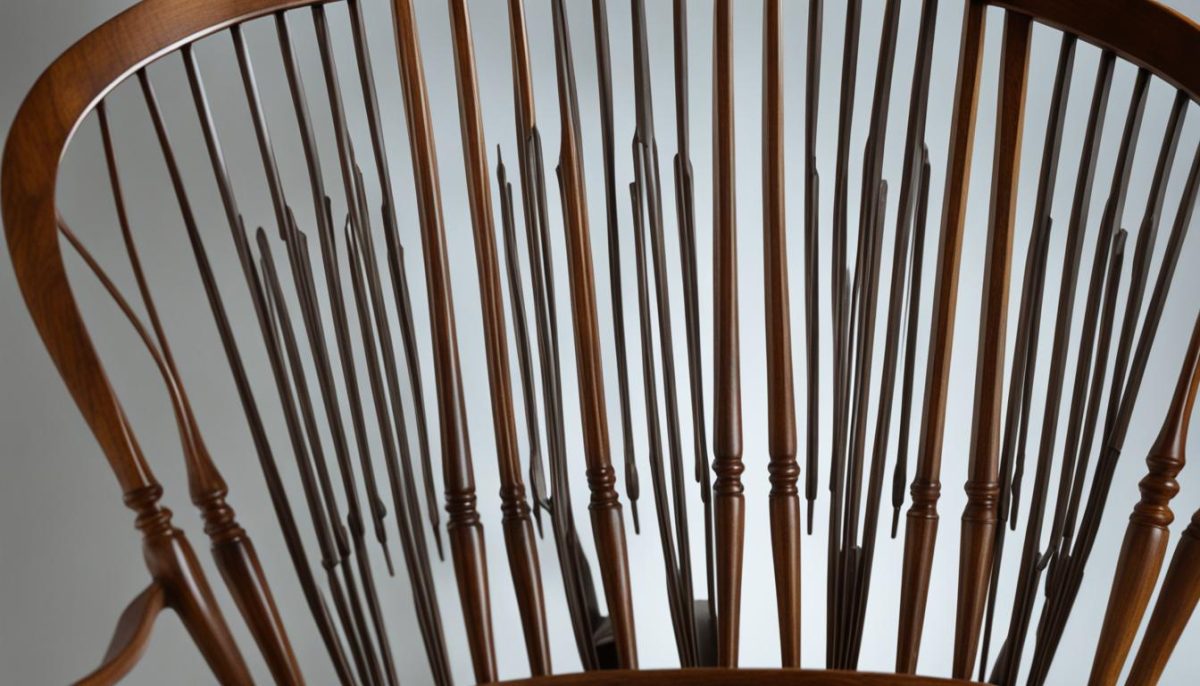Welcome to our article on the fascinating history of the chair. In this section, we will explore the origins of this essential piece of furniture and uncover the brilliant mind behind its invention. Get ready to dive into the rich history of chairs, from ancient civilizations to modern innovations.
Chairs have been a part of human existence for centuries, providing us with comfort and support. But have you ever wondered who first came up with the idea of a chair? How did this integral part of our daily lives come into existence?
Throughout history, various cultures and civilizations have contributed to the development of chairs. From ancient Egypt, Greece, and Rome to the Renaissance period, different styles and designs emerged, each reflecting the societal and cultural influences of its time.
In this article, we will take you on a journey through time, exploring the ancient origins of chairs and how they evolved over the years. We will also delve into the story of an inventive master craftsman from the 18th century whose creation revolutionized chair design.
Join us as we unravel the history of the chair, discover the innovations that have shaped its evolution, and explore the iconic designs that have become synonymous with comfort and style. By the end of this article, you will have a newfound appreciation for the chair and the individuals who have contributed to its development.
Ancient Origins of Chairs
Take a step back in time and explore the ancient origins of chairs. Journey through the civilizations of Egypt, Greece, and Rome, where early seating first took shape. From simple stools to intricate designs, the evolution of seating provides valuable insights into the innovation that eventually led to the invention of the chair.
In ancient Egypt, chairs were often reserved for the elite, symbolizing power and status. These ancient chairs featured backs and armrests intricately carved with hieroglyphics and symbols, showcasing the craftsmanship of the time.
Meanwhile, the Greeks embraced the concept of early seating with peculiar designs that reflected their cultural values. The klismos chair, characterized by its curved legs, concave backrest, and gracefully sloping arms, epitomized the elegance of Ancient Greek furniture.
In Rome, chairs became a staple in the homes of the affluent, with intricate designs and luxurious materials that emphasized comfort and opulence. These ancient Roman chairs often featured cushioned seats and elaborate carvings, showcasing the empire’s rich artistic heritage.
Just as the ancient civilizations left their mark on history, their innovative approach to seating laid the foundation for the furniture we know today. Their craftsmanship and attention to detail set the stage for the evolution of chairs throughout the ages.
As early seating continued to develop, it gradually transformed into the more sophisticated and versatile furniture pieces we recognize today. The ancient origins of chairs provide a fascinating glimpse into the evolution of design and the timeless allure of ancient furniture.
| Ancient Civilization | Distinctive Features |
|---|---|
| Egypt | Intricately carved backs and armrests adorned with hieroglyphics and symbols |
| Greece | Curved legs, concave backrests, and gracefully sloping arms of the klismos chair |
| Rome | Cushioned seats and elaborate carvings, showcasing opulence and comfort |
The Story of Thomas Warren and the Windsor Chair
In the world of furniture design, few names hold as much significance as Thomas Warren and the Windsor chair. Thomas Warren, a master craftsman from the 18th century, played a pivotal role in revolutionizing chair design with his innovative creation.
The Windsor chair is known for its distinctive features, including its solid wooden construction, spindles for back support, and saddle-shaped seat. The chair is typically made from various types of wood, such as oak, ash, or walnut, showcasing the craftsmanship and attention to detail that Warren embodied in every piece.
With its simple yet elegant design, the Windsor chair quickly gained popularity during the 18th century and remains a beloved furniture style to this day. Its timeless appeal lies in its versatility, as it seamlessly blends into both traditional and contemporary interiors.
Warren’s invention had a lasting impact on furniture design, influencing subsequent generations of craftsmen and designers. The Windsor chair became synonymous with comfort, durability, and sophistication, setting a new standard for chair aesthetics and functionality.
The Enduring Popularity of the Windsor Chair
Over the centuries, the Windsor chair has continued to capture the hearts of furniture enthusiasts and design aficionados. Its enduring popularity can be attributed to its classic form, which transcends trends and fads.
The Windsor chair’s timeless appeal lies in its ability to provide both style and comfort. Its ergonomic design ensures optimal support for the back, promoting good posture and making it an ideal seating option for long hours of use.
Moreover, the Windsor chair’s versatility allows it to seamlessly blend with a wide range of interior styles, from traditional to modern. Whether placed in a cozy living room or a sophisticated dining area, the Windsor chair adds a touch of elegance and charm to any space.
Furthermore, the craftsmanship and attention to detail that go into creating Windsor chairs are unparalleled. Each chair is meticulously handcrafted, showcasing the skill and dedication of the artisans who carry on Thomas Warren’s legacy.
Today, Windsor chairs can be found in homes, restaurants, and even museums around the world, continuing to captivate with their timeless design and exceptional craftsmanship.

| Key Features of the Windsor Chair | Benefits |
|---|---|
| Ergonomic design with back support spindles | Promotes good posture and provides comfort during long hours of sitting. |
| Saddle-shaped seat | Offers a comfortable seating experience and allows for easy movement. |
| Solid wooden construction | Ensures durability and longevity. |
| Versatile design | Blends seamlessly with various interior styles. |
| Handcrafted with meticulous attention to detail | Each chair is a work of art, showcasing the skill and craftsmanship of the maker. |
Modern Chair Innovations
The world of chair design has undergone remarkable transformations in the modern era, with advancements in materials and innovative designs redefining our seating experiences. From sleek, minimalist aesthetics to ergonomic features prioritizing comfort, let’s explore how modern chairs have evolved to meet our ever-changing needs and tastes.
One of the most significant developments in modern chair design is the emphasis on ergonomic principles. Recognizing the importance of ergonomics in promoting better posture and reducing discomfort, designers have incorporated adjustable seat heights, lumbar support, and flexible backrests into their creations. These ergonomic chairs not only enhance our comfort but also contribute to improved productivity and overall well-being.
Moreover, modern chair design has seen an influx of iconic pieces that have become timeless symbols of style and innovation. Designers such as Charles and Ray Eames, Mies van der Rohe, and Arne Jacobsen have delighted us with their iconic chair designs, such as the Eames Lounge Chair, Barcelona Chair, and Egg Chair. These masterpieces continue to inspire and adorn contemporary interiors, their forms transcending time.
Alongside ergonomic and iconic designs, the use of cutting-edge materials has revolutionized chair construction. From lightweight carbon fiber to molded plastics, modern chairs have embraced these advancements to offer durability, strength, and endless possibilities in shape and form. The integration of technology, such as smart materials and features like wireless charging and integrated speakers, further adds a touch of modernity to these creations.




